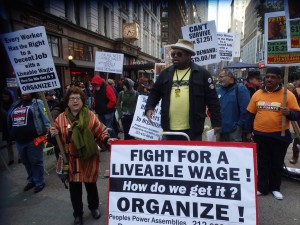What kind of business tax write-offs are we talking about? Plenty. It’s staggering just what you can deduct from your taxes and get some money back for your investment, and make no mistake — in the real estate business, even as our domestic market continues to grow with the surging home prices, foreign interest in U.S. real estate, the burgeoning mortgage trends, and millennials everywhere taking the industry by storm as the newest home buyer of the the rest of this decade, you want to stay ahead in the game with your business investments and keep the revenue flowing.
One Surefire Way to Do That Is to Make Sure You’re Taking Advantage of All of Your Business Taxes
It’s staggering just how much many real estate agents don’t know about their tax returns. This is just a list of what you can deduct for business taxes, but one thing’s for sure: you must consult with a professional at the Income Tax Planning Network and get going now. The faster you do it, the faster you get that tax refund deposit!
Business Travel
- Airfare Costs

- Car Rentals
- Dry Cleaning & Laundry
- Lodging
- Meals (Yes, meals can be deducted!)
- Parking & Tolls
- Taxi, Train, Ferry, Boat, Subway & Bus
- Tips
Communications
- Cell Phones
- Answering Services
- Faxing and Emails
- Interactive Voice Response (IVR)
- Internet
- Office Telephone (VOIP)
- Toll-Free Numbers
- Even Pagers!
Supplies & Equipment
- Briefcases
- Stationary & Other Office Supplies

- Calculators
- Cameras & Lenses
- Vacuum Cleaners
- Windex & Soap Scum Remover
- Computers, Laptops & Tablets
- Flashlights
- GPS
- Hard & Flash Drives
- Lock Boxes & Keys
- Maps
- Printers & Scanners
- Tape Measures
- Repair & Maintenance
- Security Systems
- Utilities
- Insurance Costs
- Mortgage Interest or Rent
- Property Taxes
Your Workforce (If You Have One)
- Clerical Support
- Family Wages (It’s the Truth, No Joke)
- Payroll & Unemployment Taxes
- Sales & Virtual Assistants
Other Office Expenses
- Desk Fees
- Coffee & Drinking Water Provisions
- Copier Fees
- Janitorial Services
Professional Fees
- NAR
- NAIREB
- NAREB
- NAEBA

- CREA
- Chamber of Commerce
- Bank Fees
- Bookkeeping
- Business Licensure
- E&) Insurance
- Franchise/Affiliation Fees
- Interest on Business Purchases
- Legal Fees
- MLS Fees
- Tax Preparation Fees
Retirement Costs
- The Defined Benefit Plan
- Self-Employment Pension (SEP)
- Simple IRA
- Solo 401k
Real Estate Selling Expenditures
- Appraisals
- CL100’s
- Client Gifts (Less Than $25 Per Client)
- Closing Attorney Fees
- Concessions

- Courier Services & Delivery Fees
- Finder Fees & Referrals
- Listed Property Repairs
- Home Warranties
- Inspections
- Notary Fees
- Open House Costs
- Photo Editing
- Home Staging
- Startup Organizational Costs
Overwhelmed, Yet? Don’t Be. This Is All Good for the Business Taxes.
And as a real estate agent, you’ll be doing just fine, especially after looking at this more comprehensive tax write-off guide. Yes, there’s even more you can deduct from your taxes.
So don’t sweat it. You’re doing just fine. You’ve got the business taken care of with CBB, and if you’re ready after itemizing everything from your toothpicks to telemarketing services, register with the Income Tax Planning Network right now and get those taxes done immediately.
The post Maximizing Business Taxes as a Real Estate Professional appeared first on Cloud Based Bookkeeping.
Share
Follow Us!


